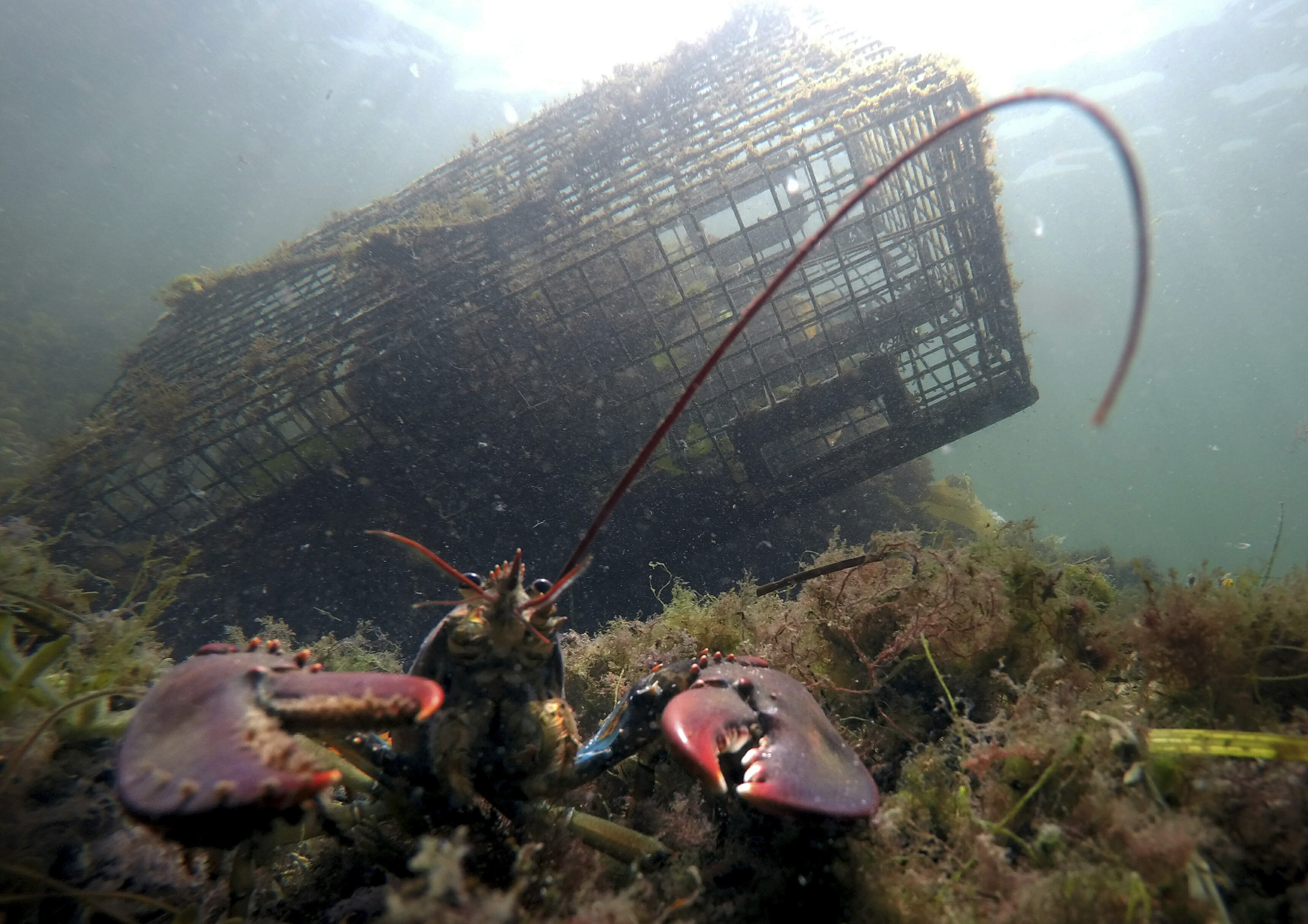
Maine's lobster catch, value grew last year, officials say
ROCKPORT, Maine (AP) — Maine lobstermen brought more than 119 million pounds (54 million kilograms) of the state’s signature seafood ashore last year, an increase that helped to propel the total value of Maine’s seafood to the second-highest value on record, state officials said Friday.
The value of the 2018 lobster catch was more than $484.5 million, and the total value for all Maine seafood was more than $637.1 million, according to the Maine Department of Marine Resources.
The state is by far the biggest lobster producer in the United States, and the industry is in the midst of a multiyear boom. However, the catch and its value have fluctuated wildly in recent years.
According to updated department numbers, the 2017 lobster haul was a little less than 112 million pounds (51 million kilograms) and was valued at more than $438 million. That was a drop from the previous year.
Preliminary data from 2018 show that trend reversed, for the year at least. The productive year by lobstermen coincided with high demand from consumers and strong retail prices.
“The demand for lobsters will always stay strong,” Kristan Porter, president of the Maine Lobstermen’s Association, said Friday to a packed audience at the Maine Fishermen’s Forum, a trade show taking place in Rockport this week.
The big-money lobster industry is contending with stresses, including Chinese tariffs. American lobster exports suffered in July when China slapped heavy tariffs on numerous U.S. products, including lobsters. U.S. lobster exports to China for 2018 were in line with the previous year, but industry members have cautioned that the exports were off by 30 to 50 percent from previous years after the tariffs took effect.
Another concern is competition with Canada, where a large seafood industry harvests, processes, sells and exports the same species. Canadian exporters face no Chinese tariff, which is a product of trade hostilities between the U.S. and China under President Donald Trump. Canada’s government has also brokered a trade deal with the European Union that makes the U.S. less competitive in that market.
Warming waters are also a concern, as the Gulf of Maine, a critical fishing area for lobsters, is warming faster than most of the world’s oceans. To the south, scientists have blamed warming waters for the depletion of the southern New England lobster fishery, and have warned that similar warming in Maine’s chilly waters could cause lobster populations to shift further north.
The fishery is even contending with a bait shortage because of a lack of herring. Still, lobster is more popular than ever in the United States, with $30 lobster roll sandwiches taking up increasing space on New York City menus in recent years.
The strong economy has given consumers the ability to order the pricey seafood item, said John Sackton, a seafood industry analyst and publisher of SeafoodNews.com.
“The economy right now has been really good, and there has been strong sales at restaurants, strong holiday promotions,” Sackton said. “There has not been a sense that lobsters are backed up, as people had feared.”
American fishermen catch lobsters with traps from Maine to the mid-Atlantic states, though the vast majority of the catch comes to shore in New England. Maine typically makes up about four-fifths of the haul, with Massachusetts accounting for most of the rest, though Rhode Island and New Hampshire also have active lobster fisheries.
The value of the U.S. lobster fishery has soared in this decade as the catch has climbed and the seafood industry has opened up new markets, such as China. The nationwide catch was worth a little less than $250 million at the docks in 2001, the last year when it was worth less than that amount. Federal figures from the National Oceanic and Atmospheric Administration state that the U.S. haul has been routinely worth more than twice that in recent years.
Maine fishermen, who harvest everything from lobsters to seaweed, took more than double the number of commercial fishing trips of any other state on the East Coast state, Maine officials said.
Other fisheries in Maine ebbed and flowed in 2018. Softshell clam harvesters brought in more than 250,000 more pounds than in 2017. Cod fishermen dealt with the continuation of a yearslong decline, with the fish worth just over $200,000 at the docks, the lowest figure since 1967.
The Western Journal has not reviewed this Associated Press story prior to publication. Therefore, it may contain editorial bias or may in some other way not meet our normal editorial standards. It is provided to our readers as a service from The Western Journal.
Truth and Accuracy
We are committed to truth and accuracy in all of our journalism. Read our editorial standards.
Advertise with The Western Journal and reach millions of highly engaged readers, while supporting our work. Advertise Today.












